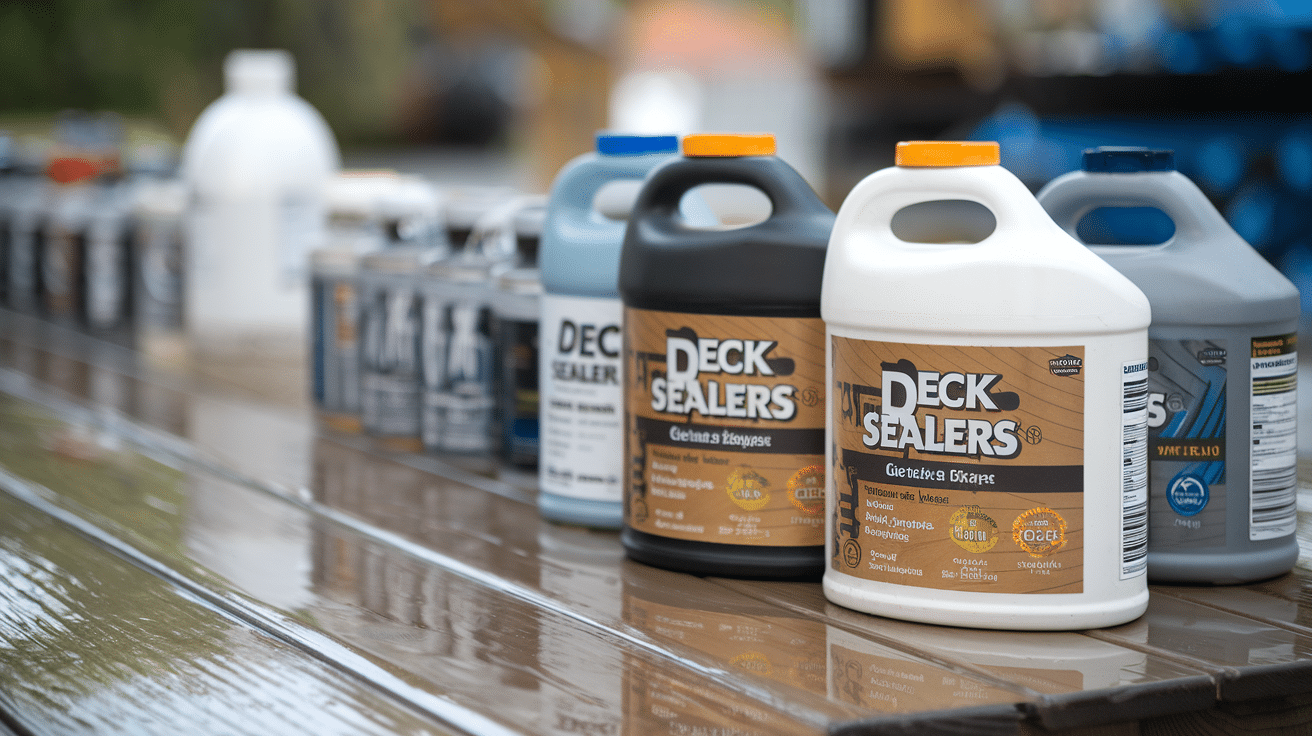Is your old deck looking worn and faded? Wooden decks can lose their charm over time due to sun, rain, and daily use.
Many homeowners wait too long to seal their aging decks, leading to costly repairs or total replacement. A good deck sealer does more than just make your deck look better—it helps stop water damage, prevents mold growth, and extends the life of your wood.
With the right sealer, you can add years to your deck’s life and keep it looking fresh without breaking the bank. The perfect sealer for old decks will fill small cracks, repel water, and block UV rays.
Read on to learn about the top deck sealers that will protect your outdoor space and save you money in the long run.
Why You Should Seal Your Old Deck?
Old decks need care to stay in good shape. Wood left untreated breaks down fast when facing the elements. Sealing your deck protects your investment.
Weather harms decks year after year. Without sealing, your deck faces:
- Water damage from rain and snow
- Cracking from hot sun and UV rays
- Splitting during freeze-thaw cycles
Wood decay grows quickly. Sealing helps by:
- Keeping moisture out of the wood
- Stopping mold and mildew growth
- Making your deck safer
A sealed deck looks better and lasts longer. The right sealer:
- Brings out the wood’s natural beauty
- Fills small cracks
- Adds years to your deck’s life
Sealing costs much less than replacing boards or rebuilding your entire deck.
Top 5 Deck Sealers for Old Decks
Here are the best products to protect and restore your old wooden deck. Each option meets specific needs and price points.
1. Thompson’s WaterSeal Advanced Natural Wood Protector
This sealer stops water from soaking into your deck boards. It fights against mold and mildew growth, which often happens on old decks. The formula works well on many types of wood, from pine to cedar. It dries in about 4 hours, which means less waiting time.
Level of Use: This product is good for beginners and DIY fans. You can apply it with a brush, roller, or pad applicator. One gallon covers about 200-400 square feet, depending on how thirsty your old wood is.
Pro Tip: For the best results, apply this sealer when the wood is fully dry but not too hot. Early morning is perfect. Apply a thin coat first, let it soak in for 10 minutes, and then wipe off any excess to avoid a sticky surface.
2. Behr Premium Semi-Transparent Waterproofing Wood Stain
This product blocks the sun’s rays that cause wood to turn gray and crack. It comes in many colors to refresh your old deck’s look. The semi-clear nature lets wood grain show through while hiding small flaws. It lasts up to 4 years on decks.
Level of Use: Mid-level skill needed. Best applied with a brush for even coating. Works best when you can set aside a full day for the project, as it needs 1-2 hours between coats.
Pro Tip: Sand your old deck lightly before using Behr stain for better grip. Apply when the forecast shows dry weather for at least 48 hours. The stain looks darker when wet, so choose a shade lighter than you think you want.
3. Rust-Oleum Zinsser Watco Exterior Wood Finish
This sealer makes water bead up and roll off your deck. It stops the growth of mildew and stays strong after many rainstorms. The oil base helps it sink into old, dry wood to give deep protection. It needs only one coat in most cases.
Level of Use: It works for most skill levels but requires care with cleanup. Apply with a good brush for best results. Plan for a full day of drying time before light use.
Pro Tip: In wet areas, add a second coat after six months for extra protection. Stir this product very well before use – don’t shake it, as that can cause bubbles. Apply in the direction of the wood grain for the smoothest finish.
4. Cabot Australian Timber Oil
A blend of oils and resins that sinks deep into wood fibers to protect from within. This oil mix feeds dry wood while adding a rich look. It guards against water damage and sun fading at the same time. The finish brings out the natural beauty in old, worn wood. It lasts about 2 years before needing a fresh coat.
Level of Use: Best for those with some deck finishing experience. Needs careful, even application with a quality brush. Take your time with this one.
Pro Tip: This oil makes wood look wet even after it dries, giving a deeper color. Test in a small spot first. Apply when the wood is cool to touch for the best soaking. Wipe off extra oil after 15 minutes to avoid sticky patches.
5. Minwax Helmsman Spar Urethane
This budget-friendly option guards against water spots, sun damage, and mildew. It dries fast, often ready for a second coat in 4 hours. The clear finish keeps your wood looking natural while still offering good protection.
Level of Use: Great for first-time deck refinishers. Easy to apply with brush or roller. Offers good protection at a lower price point.
Pro Tip: For old decks, thin the first coat with 10% mineral spirits to help it soak into dry wood better. Apply in thin coats rather than one thick one. Three thin coats will last much longer than one thick coat and won’t peel as easily.
Types of Deck Sealers
When picking a sealer for your old deck, you need to know the main types. Each kind has good points and limits.
Water-Based Sealers
Water-based sealers have become more common. These sealers dry fast, often in just 2-4 hours. They have a low odor and clean up with soap and water. They’re also better for the environment.
The downsides? They may not last as long as oil-based options and often cost more per gallon. You might need more coats, and they don’t fill small cracks well in old wood.
Oil-based Sealers
Oil-based sealers have been around longer. These products sink deep into wood fibers and last longer, often 2-3 years. They fill small cracks better and usually cost less per gallon.
The cons include strong smells and slow drying time (24-48 hours). Cleanup needs mineral spirits, and they’re less eco-friendly.
Hybrid Sealers
Hybrid sealers offer the best of both worlds. They sink into wood like oil-based products but dry faster like water-based ones. They last longer than water-based sealers and clean up easier than oil-based ones.
These mixed sealers cost more and can be harder to find and apply. Your choice depends on your deck’s state, local weather, and how much work you want to do.
Key Factors to Consider When Choosing a Deck Sealer
Wood Type
The specific kind of wood your deck is made from.
Soft woods like pine and cedar soak up more sealer. They stain faster and need thicker sealers.
Hardwoods like oak and ipe resist water better. They need less sealer but can be harder to coat. Their natural oils may block sealers.
Old decks with dry wood need richer sealers to fill gaps. Always test a small spot first.
Weather Conditions
The typical climate in your area.
Sunny areas need UV blockers to stop fading. Rainy places require water-repellent sealers.
Snowy regions need sealers that handle freeze-thaw cycles. Coastal areas need marine-grade options.
Apply sealer when temps stay between 50-90°F for two days. Rain within 24-48 hours can ruin your work.
Application Method
The way you put sealer on your deck.
Brushing gives the most control and pushes sealer into the wood and cracks better.
Rollers work faster on flat areas but use more product.
Spraying is fastest but risks uneven coating and waste. Check the label for what works best with your sealer.
Always clean your deck first for best results.
Conclusion
Finding the right sealer for your old deck can make a big difference in its lifespan. Each product we looked at offers good protection, but your best choice depends on your deck’s wood type, your local weather, and your skill level.
Remember that even the best sealer needs proper deck prep to work well. Clean your deck first, fix any loose boards, and sand rough areas before you start.
No matter which sealer you pick, regular upkeep will save you money over time. Most decks need a fresh coat every 1-3 years.
With the right sealer, your old deck can look good again and withstand many more years of use. The small cost and effort now will protect your outdoor space for seasons to come.













